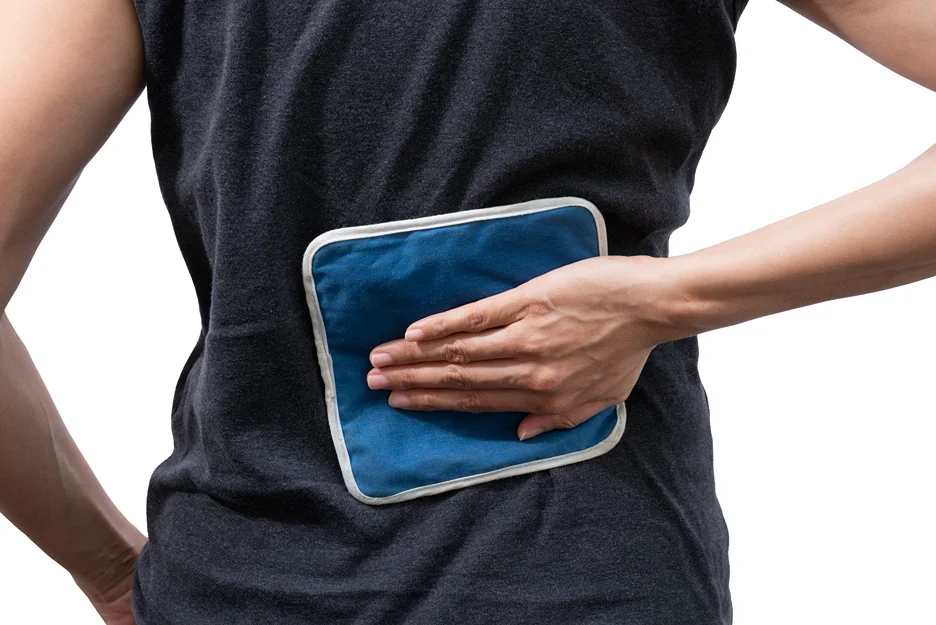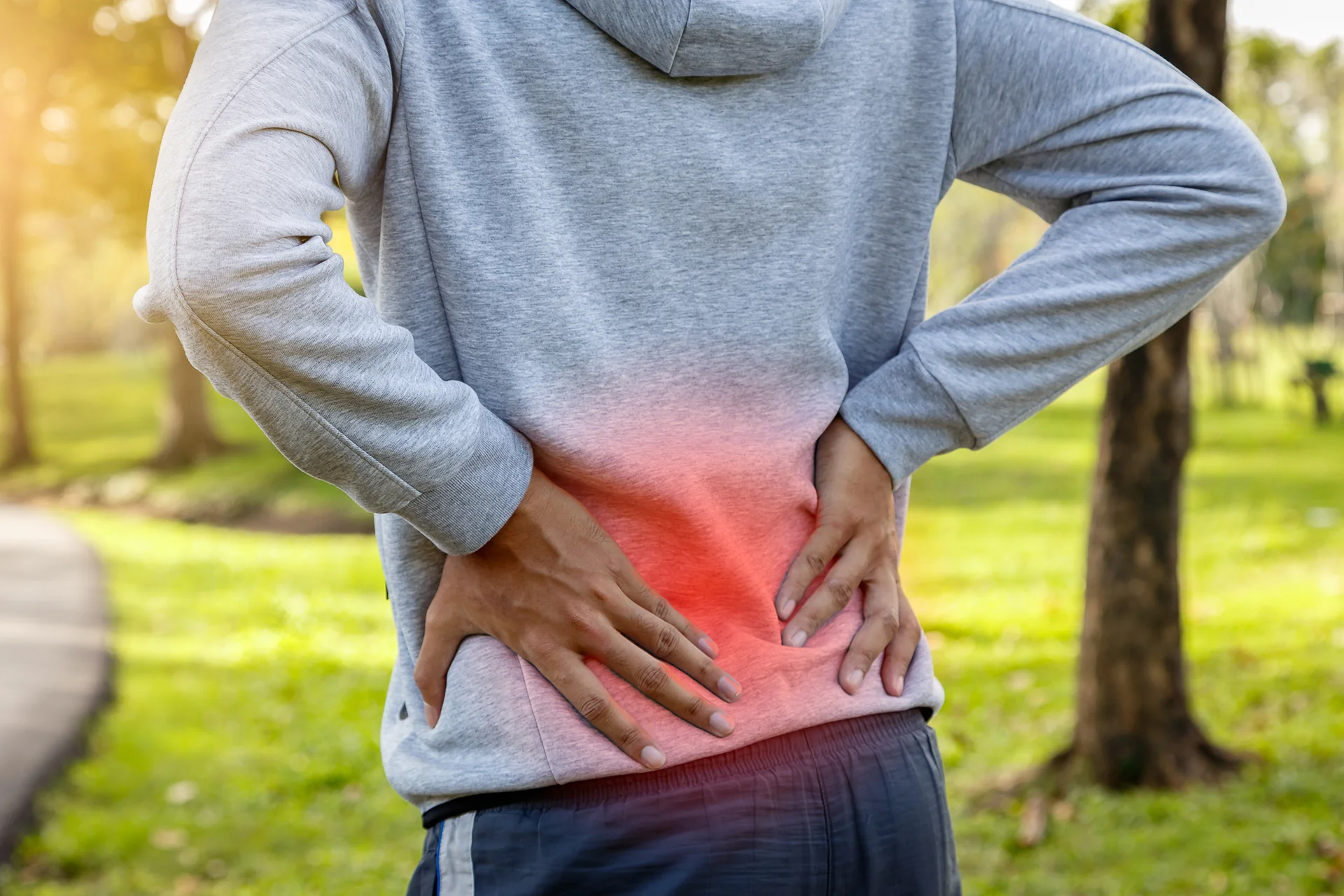From the moment you wake up to the second your head hits the pillow at night, low back pain can make even the simplest activities feel like monumental tasks. Had enough of it sabotaging your life? It’s time to break free.
Brace yourself – in this complete guide, we’re going to dive into the root causes of lower back pain and arm you with a toolbox of DIY relief strategies you can test out right in your own home.
We’ll also clue you in on when it’s time to call in medical backup. Ready to say “adios” to that ache in your back? Let’s get started.
Why You’re Experiencing Lower Back Pain
Before you can properly treat and manage lower back pain, it helps to understand what’s causing it in the first place. Here are some of the most common culprits:
Muscle Strains and Sprains
Putting too much strain on your lower back muscles through overuse, improper lifting, or injury can result in painful spasms and sprains. Activities like heavy lifting, sudden twisting motions, poor posture, lack of stretching, and even coughing/sneezing can overwork the muscles and lead to acute pain.
Pinched Nerves and Sciatica
When the large sciatic nerve running through your lower back and down your legs gets compressed or irritated, it can cause sharp shooting pains, tingling, numbness, and difficulty moving your legs. This condition is called sciatica. A herniated disc, bone spur, or narrowing of the spine (spinal stenosis) can pinch the sciatic nerve.
Arthritis
Osteoarthritis in the lower spine breaks down the flexible discs between vertebrae, causing bone-on-bone grinding and stiffness. Rheumatoid arthritis can also affect the lower back by causing swelling and damage to the spinal joints.
Other Possible Causes
Kidney problems, abdominal aortic aneurysms, and uterine issues can sometimes manifest as lower back pain. Cauda equina syndrome, where the nerves in the lower spinal cord are severely compressed, can be a medical emergency requiring immediate treatment to avoid permanent damage and paralysis.
Red-Flag Symptoms
While many episodes of back pain resolve themselves with little intervention, some red-flag symptoms warrant medical evaluation. See a doctor immediately if your back pain is accompanied by:
- Loss of bowel/bladder control
- Numbness in the groin or inner thighs
- Severe unexplained weight loss
- Fever
- Difficulty standing or walking
- Pain after a major trauma
- History of cancer
Managing Mild to Moderate Back Pain at Home

If your lower back pain is relatively mild and not caused by an underlying medical condition, there are many self-care remedies you can try to relieve it:
Heat vs Cold Therapy
Applying a heating pad or warm compress to your lower back can help relax tight muscles and increase blood flow. Use a cold pack or ice wrapped in a towel to reduce inflammation and numb acute pain. Alternate between hot and cold therapy for optimal results.
- Use a heating pad or hot water bottle on the lower back for 15 minutes 2-3 times per day during acute back pain episodes.
- Wrap ice packs in a thin towel and apply to painful areas for 10-15 minutes several times a day to reduce inflammation in the first 48-72 hours after injury.
OTC Medications
For mild to moderate back pain, over-the-counter nonsteroidal anti-inflammatory drugs (NSAIDs) like ibuprofen (Advil, Motrin) or naproxen (Aleve) can help reduce swelling and discomfort.
Acetaminophen (Tylenol) is another option for pain relief. It has fewer side effects than NSAIDs but may not reduce inflammation as effectively.
Topical creams containing menthol, capsaicin, camphor, or NSAIDs can provide localized relief when massaged into the lower back. These creams avoid systemic effects.
Remember to always follow dosage guidelines carefully.
Stretch and Strengthen Your Core
Gentle stretches for your lower back, hamstrings, and hips along with core strengthening exercises can improve flexibility and support for your spine.
Start with simple stretches like a child’s pose and work your way up to yoga, Pilates, and swimming, which reinforce proper body mechanics.
Child’s pose, cat-cow, knee-to-chest, bridge pose, plank hold, superman hold, and pelvic tilts can gently stretch tight muscles and strengthen the core to support the lower back.
Adjust Your Lifestyle
Making some simple lifestyle adjustments can take pressure off your lower back.
- Use proper lifting techniques – lift with your legs, not your back. Improve your sitting and standing posture.
- Choose a medium-firm mattress for support.
- Manage your weight to avoid placing undue strain on your back.
- Prioritize sleep and stress reduction.
Remember these other tried-and-tested methods:
- Sitting with a rolled towel or lumbar support in your chair can maintain the natural curve in your lower spine and avoid hunching forward.
- Take standing breaks every 30 minutes when working at a desk.
- Lastly, sleep on your side with a pillow between your knees or on your back with a pillow under your knees to normalize spinal curves.
Explore Complementary Therapies
Alternative treatments like chiropractic adjustments, acupuncture, and massage can provide relief by targeting pressure points and realigning the spine. A study by Mayo Clinic found that people who tried tai chi, massage, and chiropractic care had less back pain and improved function.
Knowing When It’s Time to Seek Medical Treatment
While home remedies can go a long way for temporary or mild low back pain, certain circumstances do warrant medical intervention:
Persistent or Worsening Pain
If your back pain persists for more than a couple weeks or progressively worsens despite self-care, it’s a sign you need professional guidance.
Chronic lower back pain lasting more than 3 months may require a more customized treatment approach. Seek help sooner if pain severely limits your daily activities.
Nonsurgical Treatments
Transcutaneous electrical nerve stimulation (TENS) uses electric currents to stimulate nerves and modify pain signal transmission.
Spinal Injections
Spinal injections like facet joint injections and epidural steroid injections deliver anti-inflammatory medication directly to the spine.
Minimally invasive surgeries like discectomies, laminectomies, and spinal fusion correct structural problems through tiny incisions. Spinal cord stimulators use electrical pulses to interrupt pain signals.
Surgical Solutions
If more conservative treatments fail and imaging tests reveal a clear structural cause like a herniated disc, pinched nerve, or narrowing of the spinal canal, your physician may suggest minimally invasive spine surgery or procedures like discectomies to provide lasting relief.
Always discuss the pros and cons of surgery thoroughly with your doctor, as any operation carries risks. Get a second opinion if you have doubts. Physical therapy after surgery can facilitate recovery.
Prevention Is Often the Best Route
While the occasional back twinge is often inevitable, you can take proactive steps to avoid episodes of painful lower back problems in the future. But how can you safeguard your back on a daily basis?
- Maintain proper posture when sitting, standing, and sleeping to keep your spine in neutral alignment and avoid muscle strain.
- Strengthen your midsection with regular core-focused workouts targeting your abs, obliques, back muscles, and glutes – this provides extra stability to take the load off your lower spine.
- Stretch your hip flexors, hamstrings, and muscles connecting your back to your pelvis. Tightness in these areas rotates the pelvis forward, arching the lower back unnaturally.
- Lose excess weight to avoid overburdening your lower back. Just a 10% weight reduction can reduce force on the lumbar discs.
- Avoid repetitive bending, heavy lifting, and prolonged sitting or standing in static positions. Vary your movements and take frequent breaks.
- Use ergonomic chairs, lumbar support cushions, and wrist rests to reduce strain when sitting at a desk.
- Sleep on your side or back using a medium-firm mattress and pillow that supports the natural curve of your spine.
- Manage stress through relaxation techniques. When anxious or stressed, people often tighten muscles like those in the lower back.
- Make sure to keep moving with gentle activities like walking, swimming, or biking on the reg. Too much couch time causes those back muscles to get weak and tight, leading to painful spasms and strains.
- Quit smoking. Smoking impedes blood flow, resulting in oxygen and nutrient depletion in spinal tissues.
- Team up with your doctor to tackle any nutritional shortfalls or ongoing health issues like arthritis or osteoporosis that could be fueling your back pain.
Talk to your healthcare provider if you require help creating a customized back pain prevention plan. With some minor adjustments to your daily routine and lifestyle, you can keep your back feeling supple and pain-free for years to come.
Wave Goodbye to That Pesky Lower Back Pain

We really hope these tips give you some much-needed respite from lower back pain and set you up for a stronger spine over the long haul.
Sure, severe back issues may call for professional medical treatment. But tons of mild to moderate back pain can be knocked out with simple self-care fixes you can put into practice at home. So don’t put up with the ache another day!
If your back pain persists or you want a customized recovery plan, consider connecting with a top-rated doctor through Kaly for a telemedicine consultation. Kaly carefully vets and verifies every physician on their platform so you can find the perfect back pain specialist for your needs, right from the comfort of home.
Schedule an appointment today to finally say goodbye to lower back pain. Your spine will only thank you for it!
